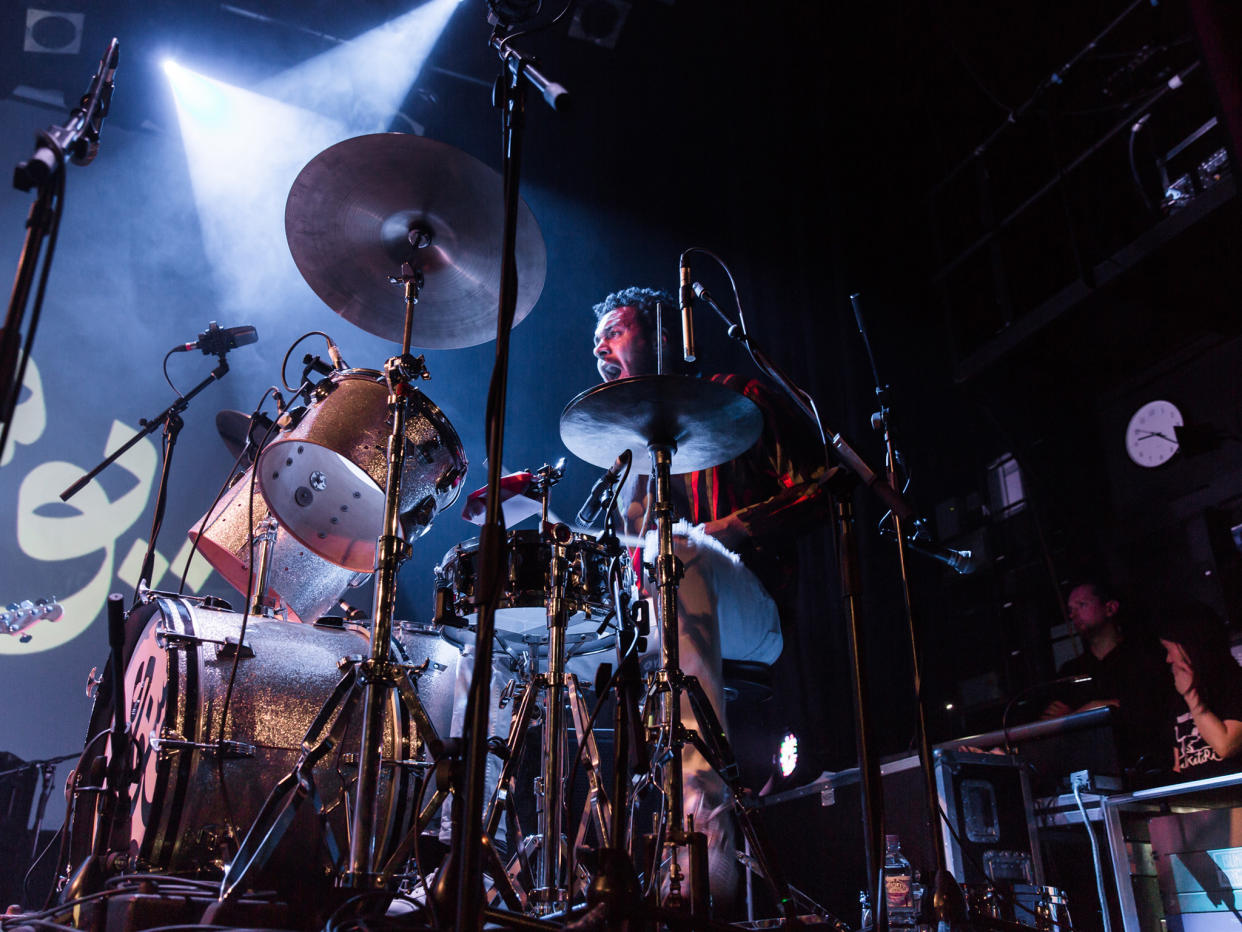Yussef Kamaal, Islington Assembly Hall, gig review: An unblinking focus on rhythm

It’s rare to see this type of volatile, virtually unspoken chemistry, the type that Yussef Kamaal have.
When you see the south London duo play together, with that preternatural ability to predict and effortlessly follow whichever direction the other is about to fly off into, you’d think they had been playing together for a lifetime.
In fact, Yussef Kamaal’s lifespan is a relatively short one.
Drummer Yussef Dayes made his name as part of United Vibrations, while keyboardist Kamaal Williams released 12”s on the Peckham-based 22a label, under the name of Henry Wu.
Now signed to Gilles Peterson’s staunchly eclectic Brownswood label, what bonds the pair is an unblinking focus on rhythm. In fact, it doesn’t seem an exaggeration to say Dayes is rhythm.
Each beat surges through him like an electric shock, and sometimes you can’t tell if it’s him playing the drums or the drums playing him. He moves with an indefatigable vigour and dexterity, drawing beats from Sixties jazz, from bossa nova, from early dubstep, from J Dilla, from just about anywhere.
When the accompanying bassist and guitarist – both excellent throughout – leave the stage, there’s an icy sparseness to Williams’ bass-heavy keyboards, boiling the rhythm down to its purest form.
We hear improvisations based around cuts off the duo’s 2016 LP, Black Focus, such as the unabashed funk of “Lowrider” and the skittish “Strings of Light”.
Each one is a confluence of musical cultures, and reflects what’s going in this scene. We’re seeing UK jazz (for lack of a better term) explore not only different musical avenues, but the circles within which it operates.
Tonight, south of the Thames, Moses Boyd, another major proponent of the movement, is playing the Corsica Studios nightclub. Here, we’re in a council meeting hall built in the Thirties. Who’s to say where it goes next.

 Yahoo News
Yahoo News 
